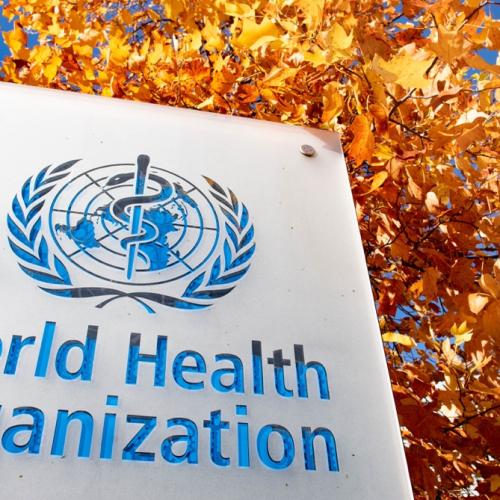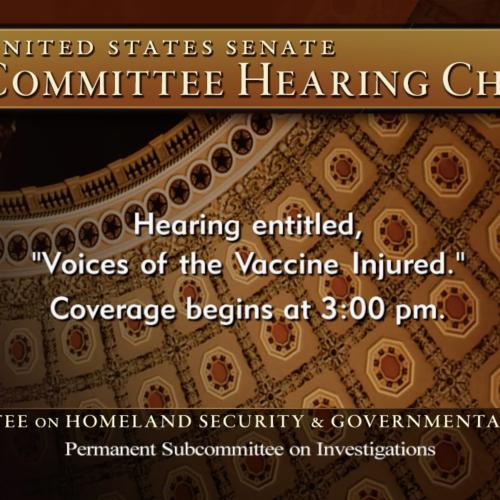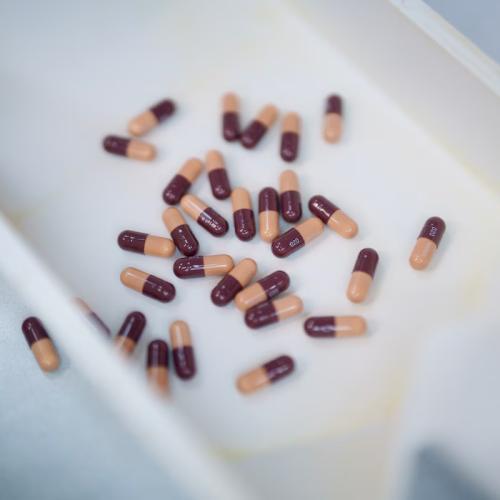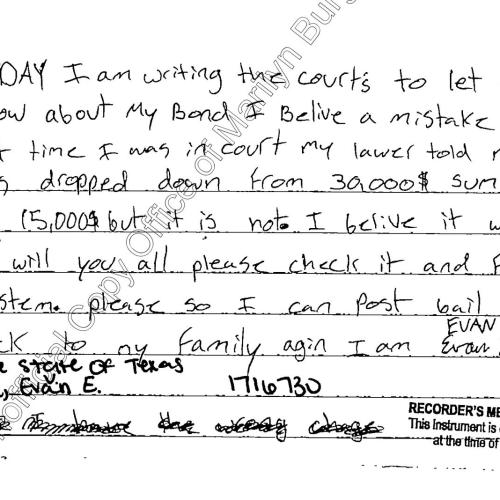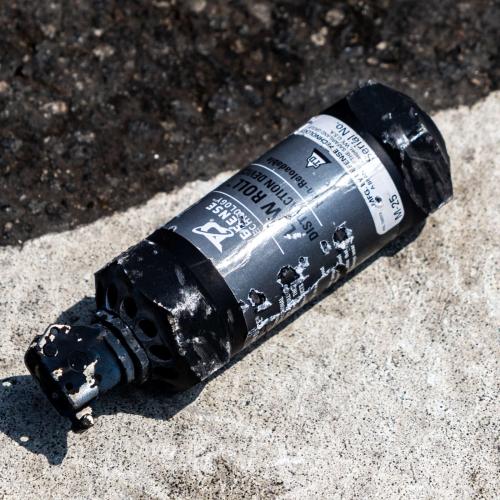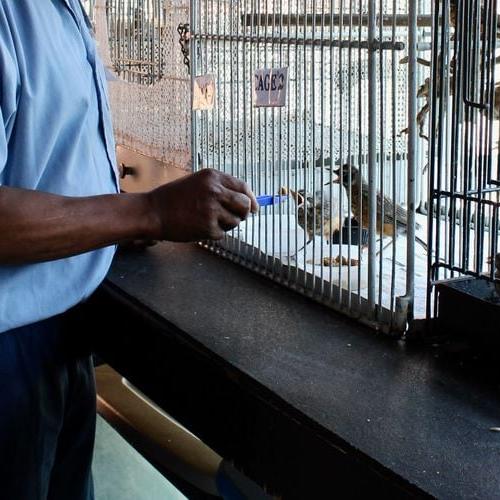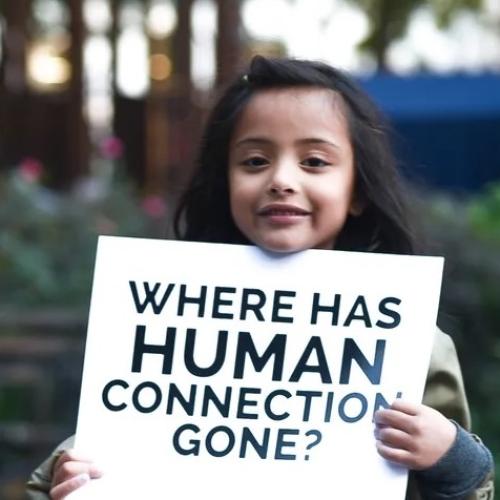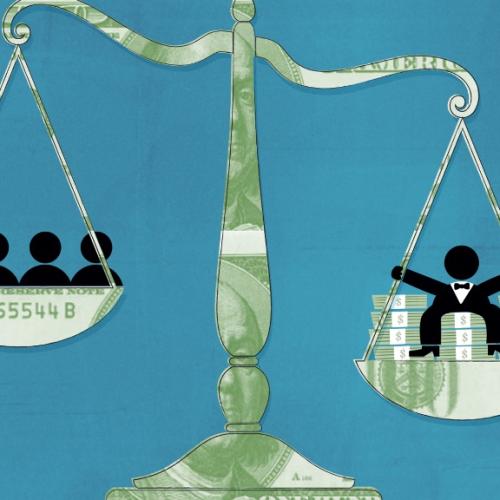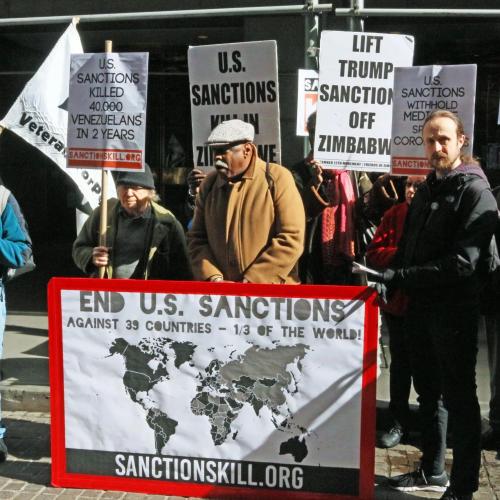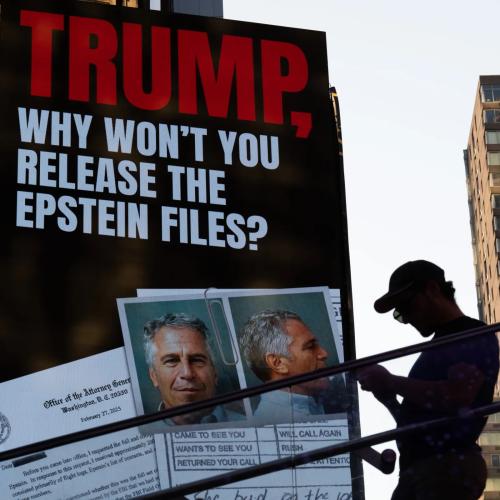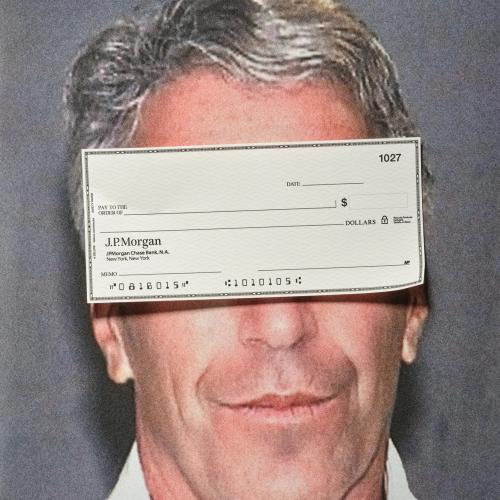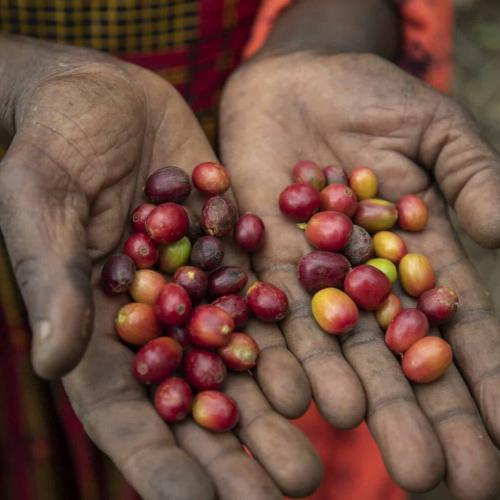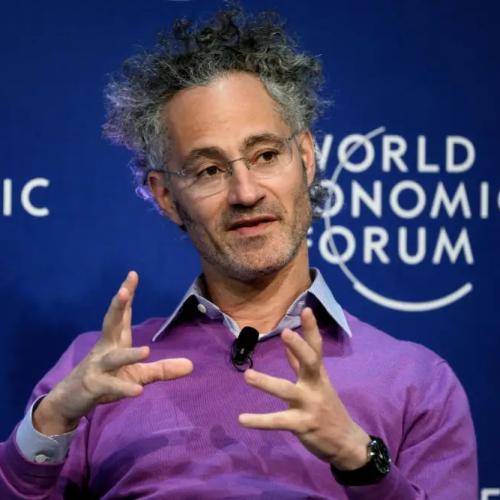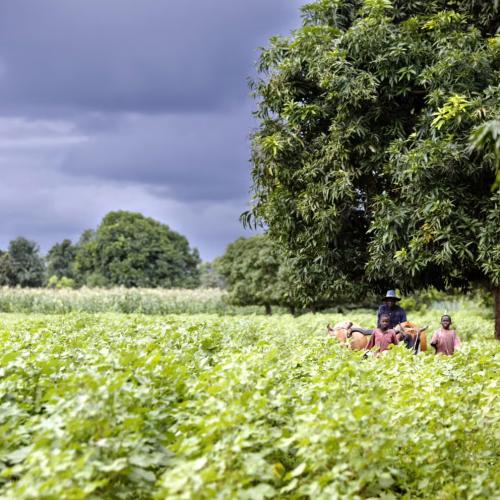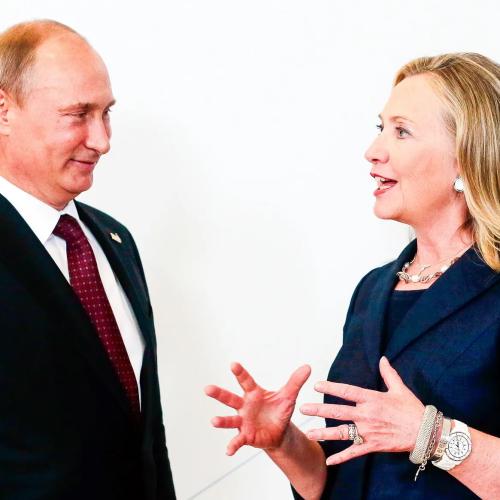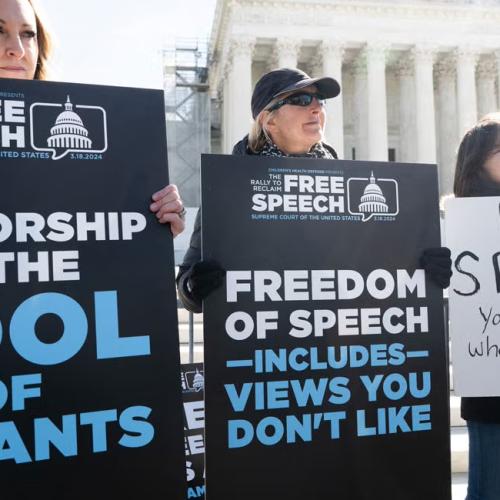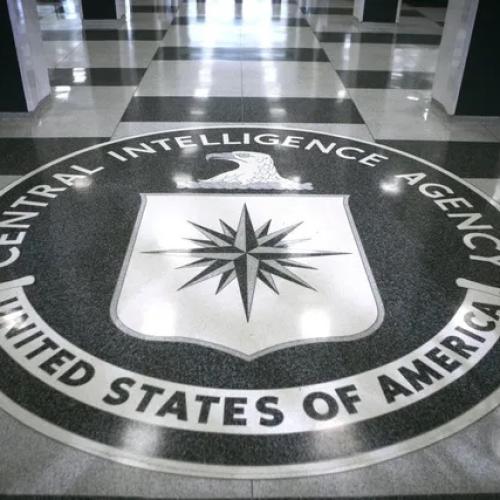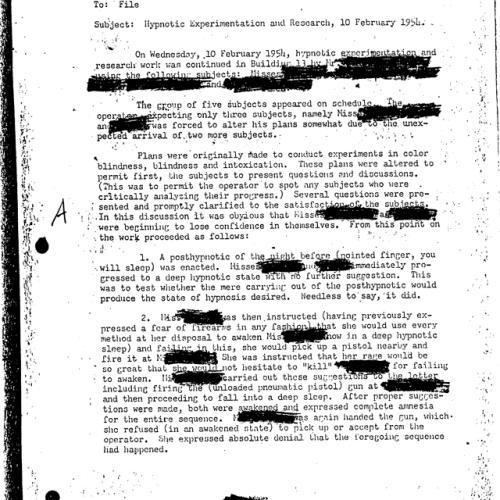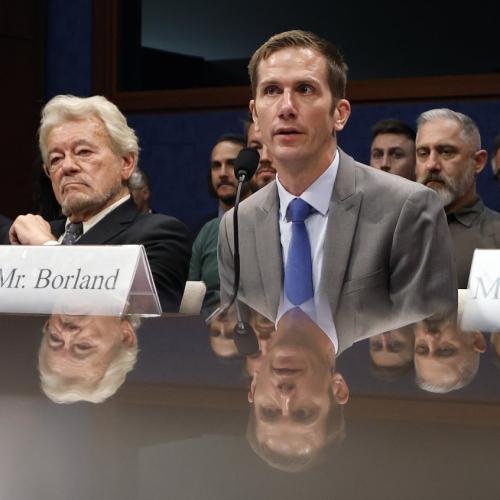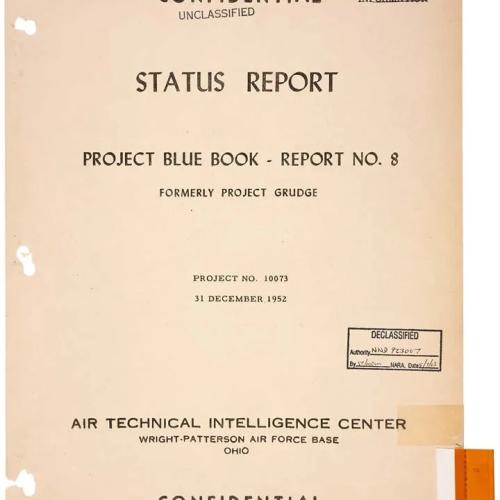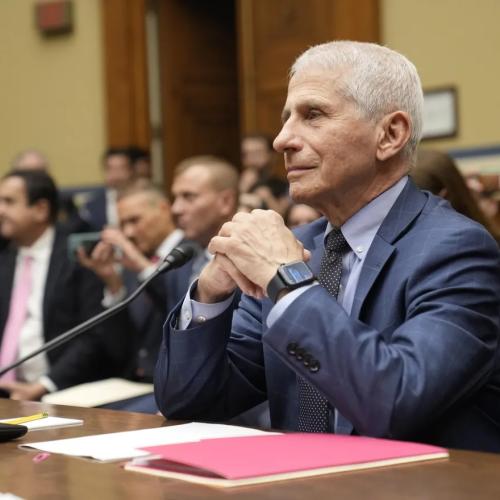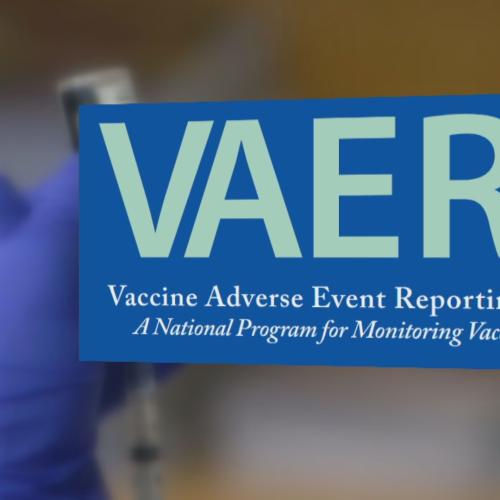Avian and Swine Flu News Articles
Below are key excerpts of revealing news articles on the Avian and Swine Flu from reliable news media sources. If any link fails to function, a paywall blocks full access, or the article is no longer available, try these digital tools.
The last time the government embarked on a major vaccine campaign against a new swine flu, thousands filed claims contending they suffered side effects from the shots. This time, the government has already taken steps to head that off. Vaccine makers and federal officials will be immune from lawsuits that result from any new swine flu vaccine, under a document signed by Secretary of Health and Human Services Kathleen Sebelius, government health officials said Friday. Since the 1980s, the government has protected vaccine makers against lawsuits over the use of childhood vaccines. The document signed by Sebelius last month grants immunity to those making a swine flu vaccine, under the provisions of a 2006 law for public health emergencies. It allows for a compensation fund, if needed. The government takes such steps to encourage drug companies to make vaccines, and it's worked. Federal officials have contracted with five manufacturers to make a swine flu vaccine. The last time the government faced a new swine flu virus was in 1976. Federal officials vaccinated 40 million Americans during a national campaign. A pandemic never materialized, but thousands who got the shots filed injury claims, saying they suffered a paralyzing condition called Guillain-Barre Syndrome or other side effects.
Note: Note for a powerfully revealing CBS report on blatant fear mongering and profiteering from the 1976 swine flue scare, click here. For many revealing reports on corruption in the medical/governmental complex, click here.
A swelling number of scientists believe swine flu has not happened by accident. No: they argue that [it] is the direct result of our demand for cheap meat. So is the way we produce our food really making us sick as a pig? The scientific evidence increasingly suggests that we have unwittingly invented an artificial way to accelerate the evolution of these deadly viruses and pump them out across the world. They are called factory farms. They manufacture low-cost flesh, with a side-dish of viruses to go. In most swine farms today, 6,000 pigs are crammed snout-to-snout in tiny cages where they can barely move, and are fed for life on an artificial pulp, while living on top of cess-pools of their own stale faeces. The virus ... has a pool of thousands [of pigs], constantly infecting and reinfecting each other. The virus can combine and recombine again and again. The ammonium from the waste they live above burns the pigs' respiratory tracts, making it easier yet for viruses to enter them. Better still, the pigs' immune systems are in free-fall. They are stressed, depressed, and permanently in panic, making them far easier to infect. There is no fresh air or sunlight to bolster their natural powers of resistance. They live in air thick with viral loads, and they are exposed every time they breathe in. As Dr Michael Greger, director of Public Health and Animal Agriculture at the Humane Society of the United States, explains: "Put all this together, and you have a perfect storm environment for these super-strains. If you wanted to create global pandemics, you'd build as many of these factory farms as possible."
Note: For many important reports on health issues from reliable sources, click here.
Pharmaceutical stocks are skyrocketing on fears that a swine flu outbreak could go global. Manufacturers of antiviral drugs [and] companies gearing up to produce a vaccine ... are turning profits in an otherwise skittish and down market. Companies gearing up for swine flu, including Roche, Gilead Sciences and GlaxoSmithKline, the manufacturers of the leading antiviral flu medications, are best positioned to see a boost in profits if the disease escalates to epidemic proportions, analysts said. Tamiflu ... was developed by Gilead and manufactured by Roche. Both companies' share prices spiked soon after the U.S. government allowed for its stockpiles of the drug to be made publicly available. Gilead stock surged to $47.53 at the end of the day Monday, up 3.78 percent. Roche rose to $31.72, up 4.34 percent. The other major flu drug currently on the market is Relenza, also stockpiled and released by the government, and manufactured by GlaxoSmithKline. Shares of Glaxo closed surged Monday to $31.56, up 7.57 percent. Both Tamiflu and Relenza are stockpiled by governments and in the case of an outbreak the companies are often required to sell the drugs directly to the government at a discount. "Government stockpiling is viewed as boon for profits. Though the government gets a discount and the margins sold to the government are lower than those if they sold to Walgreens, from a stock perspective it's an unexpected positive surprise," he said.
Note: Pharmaceutical companies make big bucks from scares like the avian flu and swine flu. Yet are the recommended drugs really effective? Many studies say they are not. For analysis of profiteering by the pharmaceutical industry during a previous flu scare, click here. See this link for lots more.
Using technology originally developed for mass disasters, Boston disease trackers are embarking on a novel experiment - one of the first in the country - aimed at eventually creating a citywide registry of everyone who has had a flu vaccination. The resulting vaccination map would allow swift intervention in neighborhoods left vulnerable to the fast-moving respiratory illness. The trial starts this afternoon, when several hundred people are expected to queue up for immunizations at the headquarters of the Boston Public Health Commission. Each of them will get a bracelet printed with a unique identifier code. Information about the vaccine's recipients, and the shot, will be entered into handheld devices similar to those used by delivery truck drivers. Infectious disease specialists in Boston and elsewhere predicted that the registry approach could prove even more useful if something more sinister strikes: a bioterrorism attack or the long-feared arrival of a global flu epidemic. In such crises, the registry could be used to track who received a special vaccine or antidote to a deadly germ. "Anything you can do to better pinpoint who's vaccinated and who's not, that's absolutely vital," said Michael Osterholm, director of the Center for Infectious Disease Research & Policy at the University of Minnesota. "I wish more cities were doing this kind of thing." When people arrive for their shots, they will get an ID bracelet with a barcode. Next, basic information - name, age, gender, address - will be entered into the patient tracking database. There will be electronic records, too, of who gave the vaccine and whether it was injected into the right arm or the left, and time-stamped for that day.
Note: For more on the serious risks and dangers posed by vaccines, click here and here.
Japanese health authorities are investigating a flu medicine that is also available in Australia after a teenager jumped 11 storeys to his death after taking the drug. It was the 18th juvenile fatality linked to Tamiflu in 17 months. The Ministry of Health, Labour and Welfare has asked the Japanese importer of Tamiflu, an anti-viral drug regarded as the most important shield against bird flu in humans, to collect information about the conditions of patients who take the drug. The 14-year-old boy's death follows a similar case two weeks ago, when a girl also 14, died after jumping from an apartment building at Gamagori, in central Japan. It also comes after a warning by the US Food and Drug Administration late last year about the dangers of giving children Tamiflu. The drug is being stockpiled in Australia as the first line of defence against bird flu. In Australia, as in Japan, it is only available by prescription. Drug companies reported that 54 people using Tamiflu died in Japan before November, the ministry said.
Note: Tamiflu is the vaccine on which Donald Rumsfeld profited $5 million and on which the U.S. government has spent hundreds of millions of dollars stockpiling, even though it might not work. For more, click here.
Ministers are preparing to offload millions of unwanted swine flu vaccines, it has emerged, as officials predicted that there will be no third wave of the pandemic this winter. Millions of [dollars] could be wasted if the Government is unable to get out of orders for the vaccine it has placed with GlaxoSmithKline (GSK), the pharmaceutical giant. Officials confirmed that they are considering a number of options, including attempting to sell or give away millions of the vaccines. They also considering whether to stand down the National Pandemic Flu Service, the network of call centres which diagnose swine flu and hand out antiviral medications. In May, even before a pandemic had been declared, ministers had signed contracts thought to be worth around 100 million to deliver 90 million vaccines to Britain. Britain has now received almost 29 million doses of the H1N1 vaccine, but only just over 3.7 million have been given out and in total the Government has announced plans to inoculate only 14 million people.
Note: For a powerful insight into the corrupt symbiosis between pharmaceutical corporations and government, read this analysis by Marcia Angell, former editor of the New England Journal of Medicine. For lots more on the swine flu scare, click here.
As the pandemic H1N1 influenza surges with the onset of winter, the nations of Eastern Europe and the former Soviet Union appear particularly vulnerable to the deadly virus. Burdened with weak health-care systems, relatively inexperienced news media outlets and shaky governments that have little public trust, the region also seems ripe for panic and political strife over the flu. The potential for trouble is already on display in Ukraine, where 1.5 million of its 46 million people have had diagnoses of flu and respiratory illnesses since the start of the outbreak and 356 have died, according to the government. More telling than the numbers, however, has been the widespread fear the virus has caused in Ukraine, and the outsize impact it has had on the nation's political landscape. Anxious residents have overwhelmed hospitals and pharmacies, buying up supplies of medicine, gauze masks and home remedies such as lemons and garlic. Rumors have proliferated that people are dying of a new, more lethal strain of the virus. Semyon Gluzman, a psychiatrist and Soviet-era dissident in Kiev, said the fear was a rational response in a nation with a dysfunctional health-care system and a corrupt, ineffective government. "What we're seeing is a normal, psychological reaction to the complete incompetence of the state authorities," he said. "People are scared, and they don't know who to trust anymore."
With the U.S. Centers for Disease Control and Prevention hoping to have 120 million doses of H1N1 swine flu virus vaccine ready before flu season this fall, some are raising concerns over what they see as an effort to rush the drug through safety trials. The source of many of these concerns is the probability that the mercury-containing preservative thimerosal will be an ingredient in some of the doses of the new vaccine. Concern over thimerosal has lingered for years. Groups opposed to current vaccination practices continue to condemn thimerosal as a toxin responsible for the development of autism and related ailments in children. Additionally, the possibility that the swine flu vaccine could also contain an adjuvant, an ingredient that would allow more doses to be created from existing supplies of the vaccine, has also worried these groups. "We don't have adequate safety studies on this vaccine before we are moving forward to market," said Lyn Redwood, president and co-founder of the group SafeMinds. "I'm really not convinced that we know for sure that the risk of the disease outweighs the risk of the vaccine, especially since this is a brand new additive that we have never used before in combination with thimerosal." During the 1976-77 flu season, a vaccine developed to prevent the spread of a strain of the swine flu was linked to an as-yet-unexplained increase in cases of a rare neurological condition known as Guillain-Barre syndrome in those who received immunizations.
Note: For many powerful reports from reliable sources on the dangers of vaccines, click here.
The Pentagon is preparing to make troops available if necessary to help the Federal Emergency Management Agency tackle a potential outbreak of the H1N1 virus this fall, FOX News has confirmed. Defense Secretary Robert Gates is preparing to sign an order authorizing the military to set up five regional teams to deal with the potential outbreak of H1N1 influenza if FEMA requests help. A senior U.S. defense official told FOX News that the plan calls for military task forces to work in conjunction with the FEMA. No final decision has been reached on how the military effort would be manned, but one source said it likely would include personnel from all branches of the military. It is not known how many troops would be needed and whether they would come from the active duty or the National Guard and Reserve forces. In the event of a major outbreak, civilian authorities would lead any relief efforts, the official said. The military, as it would for a natural disaster or other significant emergency situation, could provide support and fulfill any tasks that civilian authorities could not, such as air transport or testing of large numbers of viral samples from infected patients. As a first step, military leaders have asked Gates to authorize planning for the potential assistance. Orders to deploy actual forces would be reviewed later, depending on how much of a health threat the flu poses this fall, the officials said.
Note: In conjunction with all the other evidence that the swine flu scare is bogus, it appears that it may also be designed to provide a "wedge" to break down the prohibition, established by the Posse Comitatus Act, against use of military troops in domestic operations. For many revealing reports from reliable sources on government and military threats to civil liberties, click here.
Virtually all the dominant strain of flu in the United States this season is resistant to the leading antiviral drug Tamiflu, and scientists and health officials are trying to figure out why. The problem is not yet a public health crisis because this has been a below-average flu season so far, and because the Tamiflu-resistant strain, one of three circulating, is still susceptible to other drugs. But infectious disease specialists are worried nonetheless. Last winter, about 11 percent of the throat swabs from patients with the most common type of flu that were sent to the Centers for Disease Control and Prevention for genetic typing showed a Tamiflu-resistant strain. This season, 99 percent do. Its quite shocking, said Dr. Kent A. Sepkowitz, director of infection control at Memorial Sloan-Kettering Cancer Center in New York. Weve never lost an antimicrobial this fast. It blew me away. The single mutation that creates Tamiflu resistance appears to be spontaneous, and not a reaction to overuse of the drug. Complicating the problem, antiviral drugs work only if taken within the first 48 hours of infection.
Note: Isn't Tamiflu the same drug that was, according the the U.K.'s respected Independent, "bought in massive amounts by Governments to treat a possible human pandemic of the disease [avian flu]," and from which Donald Rumsfeld "made more than $5m in capital gains from selling shares"? What ever happened to all the panic about the avian flu? Could it be that it was only fear mongering? For reliable information on this key topic, click here.
[Gary] Butcher has been an extension veterinarian at the University of Florida's College of Veterinary Medicine since 1988. He was trained as a veterinarian specializing in avian diseases, and has a Ph.D. in poultry virology. Butcher begins his presentation with a slide that shows a "news flash" from the British press agency Reuters reporting that avian flu "poses the single biggest threat to the world right now." So far, however...no one has yet been proven to have given avian influenza to someone else. "The emphasis of all my work has changed to dealing with this madness," Butcher said Friday. "Realistically, avian influenza is not a threat to people, but everywhere you go, it has turned into a circus." Millions of chickens and waterfowl have been slaughtered in Asia...but Butcher said that of the billions of people who have probably been exposed, only about 120 have been reported to have fallen ill with avian flu. They were people who worked closely with chickens and came into contact with the birds' blood and feces. Not all health officials are sounding a warning about avian influenza, either. Dr. Marc Siegel, a practicing internist and associate professor of medicine at the New York University School of Medicine...isn't buying into the scare scenario. "If anything is contagious right now, it's judgment clouded by fear," Siegel said. [Butcher] said that although there is a potential that the virus could mutate, as it exists, it could not become an important disease in humans. "For it to become dangerous to humans, it has to go through a pretty significant genetic change. If you put this in perspective, it's not going to happen.
Note: When major corruption threatens to be exposed, those threatened know that by creating massive fear (such as a global pandemic), they can divert attention and keep money flowing into corrupt coffers. For more on this, click here and here.
The US government has lifted a three-year ban on making lethal viruses in the lab, saying the potential benefits of disease preparedness outweigh the risks. Labs will now be able to manufacture strains of influenza, Sars and Middle East Respiratory Syndrome (Mers). The ban was imposed following safety breaches at federal institutions involving anthrax and avian flu. Now a scientific review panel will have to green-light each research proposal. It will only be allowed to go ahead if the panel determines there is no safer way to conduct the research and that the benefits it will provide justify the risk. Critics say such "gain-of-function" research still risks creating an accidental pandemic. The ban was imposed in 2014 after embarrassing safety lapses including ... dozens of workers at the US Centers for Disease Control and Prevention (CDC) being exposed to anthrax bacteria, [and] long forgotten vials of smallpox left in a cardboard box being discovered at a research centre near Washington. In addition, there was concern that research into transmissible pathogens, which is published, could be used to deliberately engineer a mutant virus. Now, the US National Institutes of Health says it is time to lift the ban on funding such research.
Note: Despite FBI assurance to the contrary, the 2001 weaponized anthrax attacks remain unsolved. From November of 2001 to March of 2002, eleven microbiologists mysteriously died. According to this 2009 ABC News article, swine flu may be a "man-made product of genetic experiments accidently leaked from a laboratory". For more along these lines, see concise summaries of deeply revealing news articles on avian and swine flu from reliable major media sources.
A report on lab safety at the U.S. Centers for Disease Control and Prevention put together by a committee of external experts calls the agency's commitment to safety "inconsistent and insufficient." The report, which was completed in January but posted on the agency's website this week, also says "laboratory safety training is inadequate." An external group of 11 experts in biosafety, laboratory science and research [say] in the report [that] they are "very concerned that the CDC is on the way to losing credibility." The agency created the advisory group to improve lab safety in July in the wake of two mishaps and other issues that were uncovered. One incident occurred in June when dozens of employees in a bioterrorism lab working with the deadly anthrax virus, were at risk because of a failure to properly follow sterilization techniques. The head of that lab resigned after the incident. This followed a May incident in which avian influenza samples, thought to not be dangerous, were unintentionally mixed with the deadly H5N1 influenza virus and then shipped to a USDA lab. Then in December, with the advisory group already working to reduce lab safety risks and improve the culture of safety, employees in the Ebola lab were potentially exposed to that virus when a technician mistakenly transported the wrong specimens from a high-level lab to a lower-level lab. Internal investigations were done after each incident.
Note: See powerful media reports suggesting that both the Avian Flu and Swine Flu were manipulated to promote fear and boost pharmaceutical sales. For more along these lines, see the excellent, reliable resources provided in our Health Information Center.
As a group of healthcare workers, we are being mandated by a new New York state law to receive the seasonal flu vaccine and H1N1 vaccines. If we do not receive these vaccines by November 30th, that inaction is to be considered our resignation. We must sign a consent for the vaccines prior to their administration. The manufacturers have been granted immunity by the government; they cannot be sued for untoward effects. We do not want to receive these vaccines. Our educated studies of risks versus benefits conclude that the risks of the vaccine are greater than the possible benefits. All health care workers with direct patient care are mandated to receive the vaccine, so the coercion is real -- we cannot just go find a job "somewhere else." And the job market of 2009 does not offer opportunity in a different arena where we could still feed our families. We understand the fear that swine flu and influenza has generated. While our sources of information indicate that swine flu is not a pandemic, we know that the slanted research fed by the media offers results intended to frighten the public. We do not have the power to stop the fear that mass hype is able to generate. We hear the hype you are fed. We do not want to bring you harm, but we should not be forced into harm's way ourselves.
Note: For more on mandatory flu vaccinations, click here.
Today at the CDC in Atlanta, health officials are huddled, trying to game plan the best way to dole out a vaccine for swine flu. But what about the vaccine preservative thimerosal? Here is what the CDC says about Thimerosal: "There is no convincing evidence of harm caused by the low doses of thimerosal in vaccines, except for minor reactions like redness and swelling at the injection site." Thimerosal is no longer used in all child vaccines made in the US except for the flu vaccine. Here is the CDC on Thimerosal and flu shots: "Yes, the majority of influenza vaccines distributed in the United States currently contain Thimerosal as a preservative. However, some contain only trace amounts of Thimerosal and are considered by the Food and Drug Administration (FDA) to be preservative-free." It would seem likely that the new Swine Flu vaccine therefore would contain some amount of Thimerosal. It would also seem likely that will give some parents pause.
Note: For a powerful article on a major cover-up around thimerosal written by Robert F. Kennedy, Jr., click here. For many powerful reports from reliable sources on the dangers of vaccines, click here.
Worldwide cases of the new H1N1 swine flu virus are spreading so fast that overwhelmed global health officials have stopped counting and officials with the U.S Centers for Disease Control and Prevention say they'll soon follow suit. "We don't know the extent of the challenges that we'll face in the weeks and months ahead," said Dr. Anne Schuchat, director of the National Center for the Immunization and Respiratory Diseases. Schuchat did not elaborate on how the CDC would inform the public about the extent of the outbreak, which has been confirmed in more than 40,600 people and implicated in 263 deaths in the United States. WHO had reported nearly 95,000 cases including 429 deaths worldwide. Earlier Friday, WHO officials said tracking individual swine flu cases is too overwhelming for countries where the virus is spreading widely. WHO will no longer issue global totals of swine flu cases, although it will continue to track the global epidemic.
Note: Why would they stop counting cases? The numbers have always at best been estimates. Millions died in the 1918 flu epidemic and they have counted and reported those numbers extenstively. Could it be someone or some group does't want us to know how few are actually dying? For several other revealing articles which suggest an dangerous agenda with the swine flu vaccine, click here.
As the World Health Organization raised its infectious disease alert level Wednesday and health officials confirmed the first death linked to swine flu inside U.S. borders, scientists studying the virus are coming to the consensus that this hybrid strain of influenza -- at least in its current form -- isn't shaping up to be as fatal as the strains that caused some previous pandemics. In fact, the current outbreak of the H1N1 virus, which emerged in San Diego and southern Mexico late last month, may not even do as much damage as the run-of-the-mill flu outbreaks that occur each winter without much fanfare. "Let's not lose track of the fact that the normal seasonal influenza is a huge public health problem that kills tens of thousands of people in the U.S. alone and hundreds of thousands around the world," said Dr. Christopher Olsen, a molecular virologist who studies swine flu at the University of Wisconsin School of Veterinary Medicine in Madison. Flu viruses are known to be notoriously unpredictable, and this strain could mutate at any point -- becoming either more benign or dangerously severe. But mounting preliminary evidence from genetics labs, epidemiology models and simple mathematics suggests that the worst-case scenarios are likely to be avoided in the current outbreak. "This virus doesn't have anywhere near the capacity to kill like the 1918 virus," which claimed an estimated 50 million victims worldwide, said Richard Webby, a leading influenza virologist at St. Jude Children's Research Hospital in Memphis, Tenn.
Note: For lots more on bird and swine flu scares, click here.
A federal advisory committee on Tuesday recommended approval of the first bird flu vaccine for humans, despite concerns about its safety and evidence that the shots won't protect most people. The panel said although the vaccine had significant shortcomings, it was safe and effective for use during a pandemic or in high-risk situations, such as military deployment to regions facing an outbreak. The government plans to buy and stockpile enough doses for 20 million people. [The] director of the FDA's vaccine office told the panel that the vaccine was a stopgap measure. "There are numerous vaccines under development that are potentially better than this one," he said. The bird flu strain known as H5N1 originated in Asia. Although it rarely infects people, experts fear a mutation could make it easily transmissible, triggering a pandemic. From the start of 2003, 167 people, mostly in Asia, have died of the virus, according to the World Health Organization. In clinical trials, a two-shot series of the Sanofi vaccine provided protection in 45% of adults who received the highest dose, according to an FDA analysis this week. No serious side effects were detected among the 450 healthy adults who participated in a clinical test. However, some panel members were concerned that the trial was too small to reveal rare side effects. Some experts also worried about possible allergic reactions to the vaccine because it requires a massive dose 12 times that of the seasonal inoculation.
Note: Who pays for and who profits from the purchase of these 20 million vaccine doses? It's pretty clear that the taxpayer covers the costs and the big drug companies make huge profits. Fear is quite useful for driving up profits. For lots more on profiteering from the avian flu, click here.
Researchers...scratch their heads over the weird genetic sequence of the 1918 flu virus. Dr. Jeffery Taubenberger, a molecular pathologist at the Armed Forces Institute of Technology [said that] the 1918 virus appears to be a bird flu virus. But if it is from a bird, it is not a bird anyone has studied before. It is not like the A(H5N1) strain of bird flus in Asia, which has sickened at least 116 people, and killed 60. It is not like the influenza viruses that infect fowl in North America. Yet many researchers believe that the 1918 virus, which caused the worst infectious disease epidemic in human history, is a bird flu virus. And if so, it is the only one that has ever been known to cause a human pandemic. That, Dr. Taubenberger said, gives rise to a question. Are scientists looking for the next pandemic flu virus in all the wrong places? Birds, Dr. Slemons said, do not have much of an immune response to influenza, and so there is no particular pressure for the virus to mutate. He said birds are chronically infected with lots of flu viruses at once, and all the viruses coexist peacefully. Some experts like Dr. Peter Palese of the Mount Sinai School of Medicine in New York say the A(H5N1) flu viruses are a false alarm. He notes that studies of serum collected in 1992 from people in rural China indicated that millions of people there had antibodies to the A(H5N1) strain. That means they had been infected with an H5N1 bird virus and recovered. Despite that, and the fact that those viruses have been circulating in China more than a dozen years, almost no human-to-human spread has occurred. "The virus has been around for more than a dozen years, but it hasn't jumped into the human population," Dr. Palese said. "I don't think it has the capability of doing it."
An inventory of potentially deadly pathogens at Fort Detrick's infectious disease laboratory found more than 9,000 vials that had not been accounted for, Army officials said yesterday, raising concerns that officials wouldn't know whether dangerous toxins were missing. After four months of searching about 335 freezers and refrigerators at the U.S. Army Medical Research Institute of Infectious Diseases in Frederick, investigators found 9,220 samples that hadn't been included in a database of about 66,000 items listed as of February, said Col. Mark Kortepeter, the institute's deputy commander. The vials contained some dangerous pathogens, among them the Ebola virus, anthrax bacteria and botulinum toxin, and less lethal agents such as Venezuelan equine encephalitis virus and the bacterium that causes tularemia. Most of them, forgotten inside freezer drawers, hadn't been used in years or even decades. Officials said some serum samples from hemorrhagic fever patients dated to the Korean War. The overstock and the previous inaccuracy of the database raised the possibility that someone could have taken a sample outside the lab with no way for officials to know something was missing. The institute has been under pressure to tighten security in the wake of the 2001 anthrax attacks, which killed five people and sickened 17. FBI investigators say they think the anthrax strain used in the attacks originated at the Army lab, and its prime suspect, Bruce E. Ivins, researched anthrax there. Ivins committed suicide last year during an investigation into his activities.
Note: Fort Detrick is the home of the government lab which is suspected to be involved with the creation of many previously unknown lethal viruses and germs. For lots more, see the excellent work of Dr. Leonard Horowitz at this link and this one.
Important Note: Explore our full index to revealing excerpts of key major media news articles on several dozen engaging topics. And don't miss amazing excerpts from 20 of the most revealing news articles ever published.














